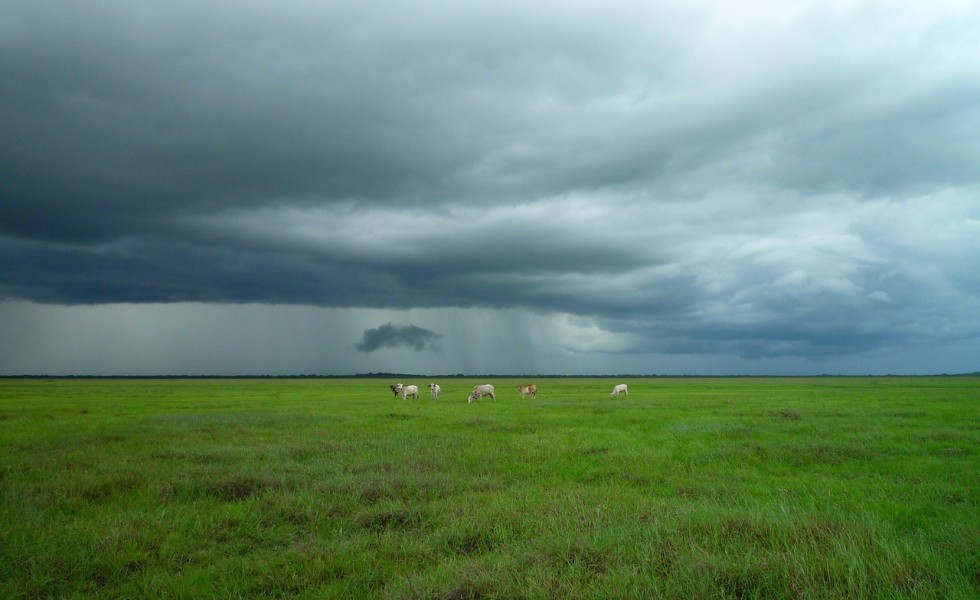Managing Climate Risk is Good for Business and Good for the Future
Posted on May 13, 2021

With the wave of a wand, you’re the boss of the Farm Credit System (FCS). You manage a portfolio of 592,000 ag-related customers holding 946,119 loans totaling $315 billion—$113 billion in real estate debt alone—according to Dec. 2020 FCS data.
Those numbers keep most people up at night but you sleep like a baby because your staff understands risk and how to “price” loans based on the Five Cs of lending: collateral, capital, character, capacity, and conditions.
Recently, though, a sixth and seventh “C” have made your days longer and your nights sweatier: climate change. How do you factor into your loans the unknown damage bigger, more frequent hurricanes, floods, droughts, harsher winters, and hotter growing seasons will have on agriculture?
The only solace you’ve found so far is that you’re not alone. Other ag lenders like commercial banks, insurance companies, and the U.S. Department of Agriculture’s (USDA) Farm Service Agency are fumbling for answers, too.
In fact, all have been fumbling for years, notes Dr. Steve Suppan, a senior policy analyst at the Institute of Agriculture & Trade Policy, in a detailed report, titled “Agricultural Finance for Climate Resilience,” published last fall.
Worse, the best answers so far—“ …larger and increasingly frequent ad hoc disaster payments and increasing subsides for private crop insurance from taxpayers funds”—clearly are “not sustainable fiscally, economically or environmentally.”
Still, a reformed federal crop insurance program could be a key element in a new, climate-flexible lending program. The reason is obvious: the need is so big—there was $83.5 billion in “weather and climate-related (losses)” from 2001 to 2016—that only government can handle the risk.
More importantly, Suppan explains, “Crop and livestock insurance policies could be written… to reduce premiums and increase indemnification payouts for farmers and ranchers complying with practices… to reduce sources of greenhouse gas emissions.”
The inverse could become law, too: insurance premiums will increase and coverage decrease for farm operations that add to climate woe.
That’s smart government; much smarter, in fact, than underwriting several questionable carbon sequestration schemes Big Ag groups are pushing now.
Lenders have other ways to encourage climate-friendly—and, in turn, loan friendly—agriculture.
For example, explains a recent report titled “Financing Resilient Agriculture,” from the Environmental Defense Fund, “ Lenders can establish differential interest rates”—meaning lower rates—“for loans … to farmers with positive attributes” like climate-friendly practices.
Right now, however, “Lenders have a blind spot when it comes to understanding the connections between conservation adoption and farm finances,” especially with Big Ag’s gassy livestock production methods.
That is something Congress can fix fast if it’s committed to underwriting climate-resiliency in the coming decade.
For example, since the Farm Credit System is a GSE, or a government-sponsored enterprise, it receives market benefits because of its special status. As such, Congress could require it to make climate-friendly lending the standard for all loans to farmers, ranchers, cooperatives, and rural communities.
Congress could require USDA to do the same in its direct ag lending, estimated at $17 billion in 2018. If commercial lenders were added in, Congress could influence another $170 billion in ag loans.
To get an even bigger climate-change bang for their dollars, Congress (and lenders) might offer even larger loan and larger federal crop and livestock insurance subsidies to farmers who add (or add to) a complementary crop/pasture/livestock enterprise to their farms or ranchers to maximize climate mitigation.
There are other, climate-affecting actions lenders could take—make soil health a measure in loan appraisal, write clean water incentives into loans, steer borrowers into longer-term “relationship” loans—to make agriculture more climate friendly and more sustainable.
Whatever action is taken, it needs to happen fast; there’s no time to waste on phony solutions to real problems. And farmers and ranchers should flock to join if, that is, they really hope to live their creed as the “first environmentalists.”
Besides, it’s good business now and decades from now.
© 2021 ag comm
Share This